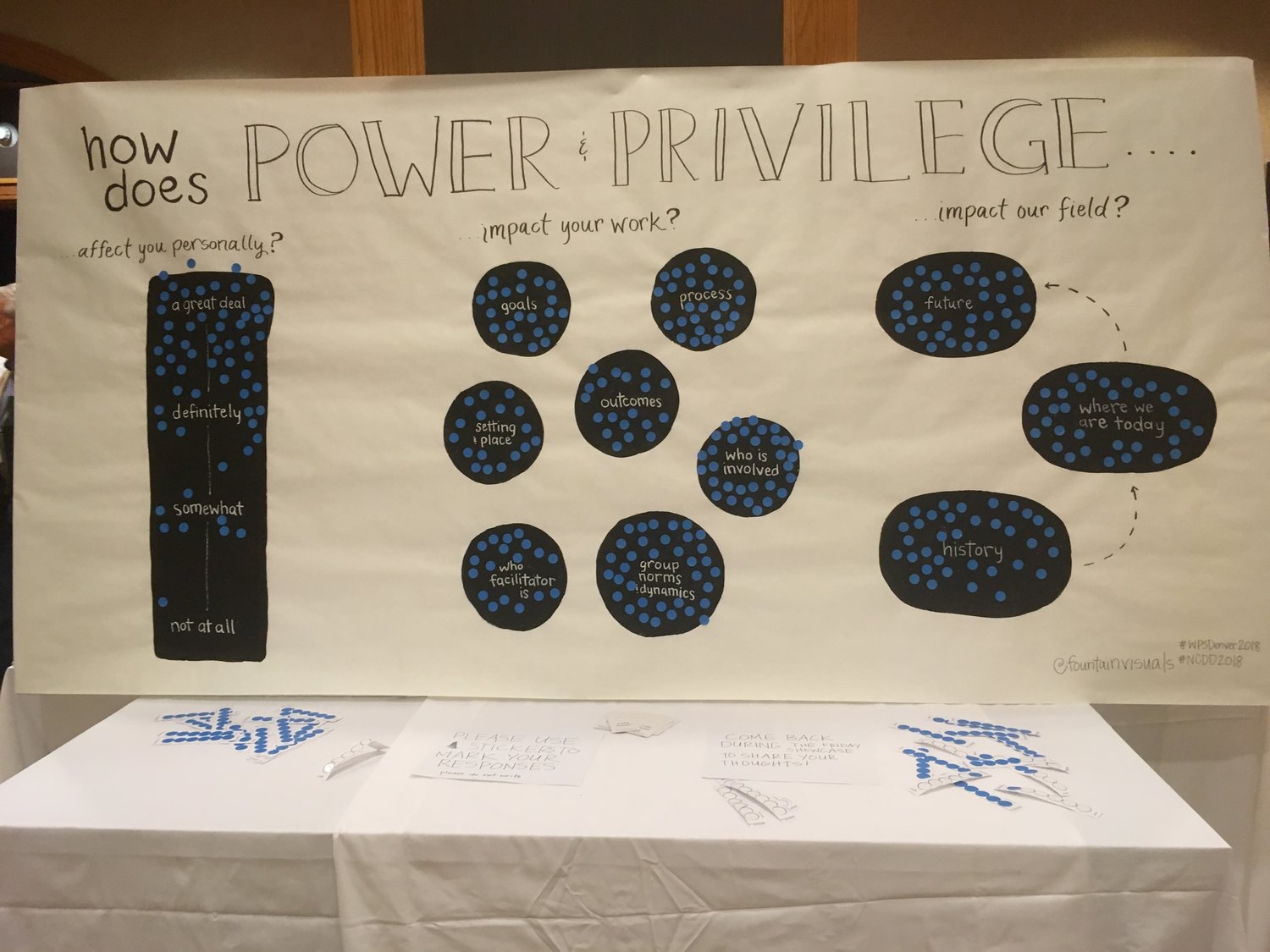Creating visuals that inspire real-time conversation
In June and July MethodSpace will focus on research-oriented careers including career purpose and goals, skills, as well as expected and unexpected transitions.
How many conversations have you had this week about something you saw, on TV or happening in front of you? Vision is the primary way we sense and experience our world - and we are social beings who process information with others. We can easily leverage these tendencies if we want to inspire specific conversations in specific moments.
The conventional way of doing so is using presentation slides or videos to introduce or explain important topics. These visual forms, however, emphasize what is important from the perspective of the presenter. They do not necessarily offer opportunities to capture what a larger group of people thinks or feels.
Visuals that can break from this norm are known as graphic recordings. Graphic recordings are visuals that capture conversation as it is happening in real time. By doing so they are able to help us literally see what is being said and thereby process this information in different ways.
There is a third way that can ensure both that many people are able to collectively create a meaningful visual and that the meaning is specifically tied to a clear objective. These visuals, which do not yet have a single term associated with them, are typically templates that evolve as the result of participation. Creating them requires little technology nor aesthetic skills, but it does require use of a thoughtful design process.
I recently had the pleasure of creating a visual of this type for the 2018 National Coalition for Dialogue and Deliberation (NCDD) conference. Here are the basic stages of design, their main elements, and how I experienced them for this project in particular.

Empathize. There are two sides of this coin, both of which are important for planning appropriately. First, think about the audience or group the visual will engage: What kind of support do they need to think, feel, and/or act in ways that help them reach their individual goals? Now, consider the conveners’ or facilitators’ needs: What would help them reach collective goals, whether those be to build relations or to accomplish tasks? For this example, conference organizers were quickly able to articulate their desire to deepen conversation related to their partnership with the White Privilege Symposium. After some discussion they also identified that attendees may have a need to extend dialogue about related topics beyond individual sessions as well as to contribute ideas perhaps anonymously.
Create. A clear understanding of goals and needs is what informs what the visual will look like and how participants will engage with it. At this stage, collaborators work to develop main themes or questions as well as what specific words would be best to use. The purpose of this stage is to design a template that is incredibly clear and that invites active engagement. Conference organizers used a basic sketch of this template to solicit feedback from key stakeholders, which is crucial for ensuring these purposes are fulfilled. Then I created the visual on a very large (four by eight foot) piece of paper that we planned to place in a highly visible location during the course of the conference.
Engage. During the previous stage, decisions were made about how exactly ideas will be shared. These decisions will determine to what extent the visual will or will not require any degree of facilitation. In this case, we’d decided on a mix of both: attendees would be able to mark different options with stickers on their own and I would engage those who visited me during the showcase and capture those conversations on the template as well. I appreciated this approach because it allowed attendees to get a quick “big picture” idea of their fellow attendees perspectives and it also allowed them to learn from the individual insights that were captured by me. In my experience, this stage, like the previous one, is somewhat experimental, especially since some people will test the limits of any creative license you give them while others will be confused or even paralyzed by such an interruption in group norms.
The key thing to keep in mind for these visuals is that, unlike other visuals perhaps, the product or outcome matters less than the fact that group members are being offered an opportunity to participate in a shared experience and to collectively make meaning. Because they are nontraditional, these visuals also provide space for intentional conversations to occur in unexpected ways.
In the co-creation of this example visual, NCDD conference attendees made it abundantly clear how they feel power and privilege impacts them, their work, and the field. They reflected on familiar ideas, posed new questions, and, if nothing else, were heard.
This article was originally published by National Coalition for Dialogue & Deliberation.
About Lydia Hooper
Lydia is a regular guest contributor to MethodSpace. See:
More posts from Lydia's blog:
For the past decade, Lydia has been working at the crossroads of science, education, and design in a dogged pursuit to discover how we can best come together to create the change we collectively need. She is committed to supporting creatives, visionaries, innovators, change agents, and civic leaders in being brilliantly creative and beautifully collaborative by sharing knowledge and practical tools. You can easily become one of her beloved patrons on Patreon and get access to hundreds of articles, visuals, interviews, worksheets and more about topics such as psychology, storytelling, and facilitation. Just visit patreon.com/lydiahooper and choose the membership tier that works best for you (starts at $2 a month). You can follow her on Medium and join her FREE virtual Work That Reconnects workshop.
